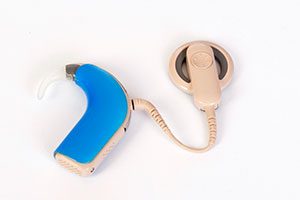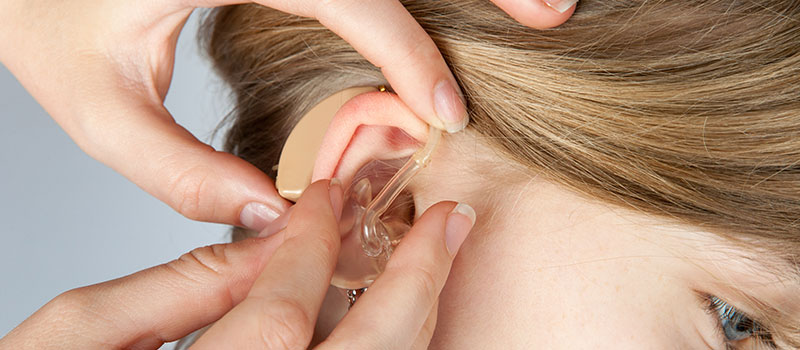Learning that your child is suffering from hearing loss can be difficult to cope with. For some children, cochlear implants are a wonderful option that can allow the sensation of hearing. Since their invention, they’ve helped over 300,000 people with moderate to profound hearing loss worldwide.
How the Ear Processes Sound
Our sense of hearing is a fine-tuned process. It starts with the outer portion of the ear and ends with the brain.
1. Sound waves travel through the air and reach the outer ear. The shape of the outer ear is designed to funnel sound efficiently into the ear canal.
2. Sound waves continue to travel through air the ear canal, or auditory canal, and are directed to the middle ear.
3. Sound waves cause the ear drum to vibrate, which in turn causes the bones of the middle ear to vibrate. These vibrations conduct sound waves from the air-filled middle ear into the fluid in the inner ear.
4. Sound vibrations travel through the fluid of the inner ear and cause cilia, or tiny hairs, in the inner ear to move. This portion of the ear is called the cochlea. Different parts of the cochlea process different sound frequencies.
5. The movement of the cilia stimulate the auditory nerves.
6. The auditory nerves transfer the sound signals to the brain.
7. The brain interprets the signals and allows us to comprehend and react to them.
Hearing loss can be caused by problems anywhere from the outer ear all the way to the brain.
 How Do Cochlear Implants Work?
How Do Cochlear Implants Work?
A cochlear implant is quite different than a hearing aid. Hearing aids are designed to amplify sounds and compensate for a damaged ears. Implant devices are designed to bypass damaged inner ears entirely. They process and route sound signals directly to auditory nerves.
Implants have both an internal and external component. The external component includes a microphone to pick up sound, a processor to arrange it and a transmitter to send the signals to the internal components. The internal components include a receiver and electrodes. The receiver collects the signal from the external components and sends it to the electrodes. The electrodes, in turn, transmit the sensational of sound to the cochlea and auditory nerves.
Is My Child Eligible?
A speech-language pathologist, doctor and auditory specialist often work together to determine if a child is eligible for a cochlear implant. Multiple factors, including physical health, the cause of hearing loss and even emotional considerations, can play a role.
Ideal candidates:
• Have moderate to profound hearing loss in both ears
• Have hearing loss caused by inner ear damage or dysfunction
• Get little to no benefit from hearing aids
• Are able to understand and play their role in their auditory rehabilitation
• Are otherwise healthy enough to expect successful surgery
There are other factors that can determine how successful a child will be after implantation. Children who have residual hearing or were born with the ability to hear often adapt to implants faster. Children who receive an implant soon after hearing loss occurs adapt faster as well.
What Does “Sensation of Sound” Mean?
Getting an implant does not immediately allow your child to understand all of the information they are now able to perceive. The brain has to learn how to process, catalog, and recall the meaning of these sounds through nerves that have been understimulated for many years. It can be like trying to learn a new, overwhelming language.
Additionally, an implant doesn’t provide as true or as clear a sound sensation as a natural, healthy ear can. Some people that have received implants describe perceiving sound with one as a “feeling” rather than “hearing.” They may describe their head as feeling “full.” Pre-operative counseling and post-operative rehabilitation are crucial for setting appropriate expectations ahead of surgery and meeting them once the implant is in.
What Is the Procedure Like?
Implant surgery is a straightforward but delicate procedure. It typically takes two to four hours and is performed under IV sedation.
The surgeon starts by opening the skull just behind the ear. They identify all key structures, then access the cochlea in the inner ear. The electrodes are implanted in the cochlea, then the receiver is placed beneath the skin behind the ear.
It will be four to six weeks until the exterior components are hooked up to the implant, programmed and activated. A speech-language pathologist and audiologist will work together to tune the implant over several months and help your child adapt to their new sensations of sound.
Children have flexible brains and adapt to implants better than adults. The earlier an eligible child receives an implant, the stronger their auditory processing can become. If you think your child may be eligible, schedule a consultation with Pediatric ENT of Oklahoma today.

